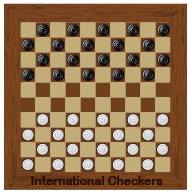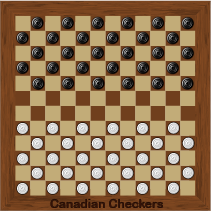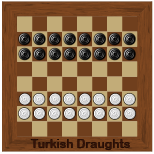I. Introduction
With a history dating back thousands of years, checkers is a game that has continually captured our fascination. This strategy-based board game, known as draughts in some parts of the world, has evolved across different cultures and ages, leading to a variety of rules and game styles.
Despite its simple premise, checkers requires tactical thinking and foresight. The game is a test of wits, where players must predict their opponent’s moves, formulate strategies, and make calculated risks to capture all enemy pieces or immobilize them.
This guide will offer a comprehensive exploration of checkers, from its rules and different variations to strategies and its cognitive benefits. Whether you are a beginner seeking to understand the basics or an experienced player looking to sharpen your skills, this guide is designed to navigate you through the enthralling world of checkers. Let’s embark on this journey.
II. Understanding the Basics
Before we dive into the strategies and intricacies of checkers, it’s crucial to first understand the game’s basic elements. Checkers is a two-player game, played on a square board consisting of 64 squares of alternating colors. The game’s goal is simple: to capture all your opponent’s pieces or block them so they cannot move.
A. Game Equipment
Checkers is played on a square board similar to a chessboard. The board has 64 squares of alternating colors, typically black and white or a similar combination of contrasting shades. Each player starts with 12 round pieces (checkers), traditionally colored dark and light to match the squares on the board.
B. Setting Up the Board
The board is positioned so that each player has a light square on their right side corner. Each player’s pieces are placed on the dark squares of the three rows closest to them. This setup leaves two rows of squares in the middle of the board empty and ready for the battle to unfold.
C. How the Pieces Move
All standard pieces (non-kinged) can move diagonally forward to an empty, adjacent square. When a piece reaches the opponent’s side of the board (the “king row”), it becomes a king. Kings can move and capture diagonally forwards and backwards.
D. Rules of the Game
The game proceeds with players taking turns, starting with the player with the dark pieces. The main rule of checkers is that all captures are mandatory. If a player can capture an opponent’s piece, they must do so. If a piece reaches the opponent’s edge of the board, it is “kinged” and gains the ability to move both forward and backward. The game continues until one player captures all the opponent’s pieces or blocks them so they have no legal moves left.
In the following sections, we’ll explore the different variations of checkers that have developed over time, and delve into some strategies that can help turn the tide of the game in your favor.
III. Different Variations of Checkers
The game of checkers is not confined to a single set of rules or a particular style of play. Over the years, various forms of the game have evolved, each with its unique set of rules and strategies. Here are some of the most popular variations:
A. American Checkers/Draughts
Also known as English Draughts, this is the version most commonly played in the United States. It follows the basic rules outlined above, with standard pieces moving diagonally forward and kings moving both forwards and backwards. The game is played on an 8×8 board.
B. International Checkers

Played on a 10×10 board with 20 pieces per player, International Checkers allows for more complex strategies due to the larger game area. All captures, including those by kings, must continue to the maximum possible extent.
C. English Draughts
This is essentially the same as American Checkers, played on an 8×8 board with rules about movement and capturing similar to those in American Checkers.
D. Canadian Checkers

This variant expands the game even further, using a 12×12 board and 30 pieces per player. As in International Checkers, the maximum possible number of captures must be made.
E. Turkish Draughts

In Turkish Draughts, the game is played on an 8×8 board, but the pieces move straight forwards and sideways instead of diagonally. When they reach the last row, they are promoted to kings and can then move forwards and backwards.
F. Brazilian Checkers
Brazilian Checkers is played on an 8×8 board, similar to American Checkers. However, there is a significant difference: the rule of majority capture, which states that if a player has multiple options for capturing, they must choose the option that captures the most pieces.
These variations provide a rich tapestry of gameplay styles for checkers enthusiasts, each offering its unique challenges and opportunities. In the next section, we’ll delve into some strategies to help you improve your game, no matter which variation you prefer.
IV. Developing Checkers Strategies
Once you understand the basic rules and variations of checkers, the next step is to develop your strategic thinking. While checkers might seem straightforward, the game can become complex and nuanced at higher levels of play. In this section, we’ll go over some basic and advanced strategies to help you improve your game.
A. Basic Strategies for Beginners
1. Controlling the Center
Just as with chess and other board games, controlling the center of the board often provides an advantage, giving your pieces more mobility and flexibility.
2. Keeping Your Back Row Intact
By leaving your back row (the row closest to you) untouched, you prevent your opponent from getting “kinged.” This strategy can help you control the pace of the game.
3. Forming Blockades
Positioning your pieces so that they form a line across the board can prevent your opponent from advancing and force them into making a mistake.
B. Advanced Strategies
1. Forced Captures and Multi-jump Moves
One of the most satisfying parts of checkers is setting up a multiple-capture move, jumping over several of your opponent’s pieces in a single turn. Look for opportunities where you can force your opponent to move into a position that allows for these types of moves.
2. The Double Corner Opening
The Double Corner opening involves occupying the two corners closest to you on the right side of the board. This can give you a defensive advantage and provide a safe spot to ‘king’ your pieces.
3. Sacrifice for Advantage
Sometimes, it’s worth sacrificing one of your pieces to gain a strategic advantage. This might mean baiting your opponent into a multi-jump move that leaves their pieces vulnerable, or moving a piece into a risky position to open up the board.
C. Common Mistakes to Avoid
Understanding common mistakes in checkers can also help improve your game. These include moving a piece from your back row too early, not taking advantage of forced captures, and not planning your moves ahead.
In the next section, we will look at ways to further enhance your skills and master the art of checkers.
V. Mastering the Art of Checkers: Skill Improvement Techniques
Improving at checkers requires practice, analysis, and the willingness to learn from every game, whether it’s a victory or a loss. Here, we explore some techniques that can help you hone your skills and master the art of this classic game.
A. Regular Practice
Consistent practice is vital in mastering any skill, and checkers is no exception. Playing regularly allows you to familiarize yourself with various game situations and improve your decision-making skills. Aim to play a few games each week, if not daily.
B. Analyzing Past Games
Reflecting on your past games is a powerful tool for improvement. By analyzing your moves and understanding the decisions that led to a win or loss, you can identify areas for improvement and avoid repeating mistakes in the future.
C. Learning from Experts and Mentors
Studying games played by experienced checkers players can provide valuable insights into advanced strategies and techniques. Reading books, watching tutorial videos, or finding a mentor can significantly enhance your understanding of the game.
D. Participating in Tournaments
Once you feel confident in your skills, consider participating in local or online checkers tournaments. Competing against a variety of opponents will expose you to different styles of play and strategies, helping you become a more adaptable and versatile player.
In the following section, we’ll explore the cognitive benefits of playing checkers and how this timeless game contributes to our mental fitness.
VI. The Role of Checkers in Cognitive Development
Checkers is not just an engaging game; it’s also a powerful tool for cognitive development. By challenging players to think strategically and plan ahead, checkers can enhance a variety of mental skills. Let’s delve into the specific cognitive benefits of this classic game.
A. Improving Problem-Solving Skills
Checkers requires players to think critically and strategize their moves, which can help improve problem-solving abilities. Every move and countermove presents a new problem to solve, fostering adaptive thinking.
B. Enhancing Memory and Concentration
Regularly playing checkers can aid in enhancing memory as players need to remember past games, strategies, and specific sequences of moves. Additionally, the game demands focus and concentration, which can help improve these skills over time.
C. Promoting Strategic Thinking
In checkers, planning several moves ahead is crucial for success. This aspect of the game encourages forward-thinking and strategic planning, skills that are beneficial in many real-life situations.
In the next section, we will explore how the game of checkers has adapted to the digital age and the rise of online gaming platforms.
VII. Conclusion: The Enduring Appeal of Checkers
Checkers, a game deeply rooted in history, continues to captivate us with its simple yet strategic gameplay. This guide has taken you through its basic principles, various forms, strategies, cognitive benefits, and the exciting opportunities in online play.
Despite the surge of digital games, checkers remains timeless, appealing to all ages and cultures. It’s a game that challenges our minds, offering not just the thrill of victory, but also the value of strategic thinking, problem-solving, and learning from each move.
As we embrace the digital age, the world of checkers expands, bringing players together from across the globe. Whether you’re playing on a classic board or online, checkers continues to offer endless enjoyment and mental stimulation. Here’s to countless more games and the continual discovery of new strategies in this enduring game of skill and strategy.
VIII. Resources for Further Study
For those who wish to delve deeper into the world of checkers, there are a wealth of resources available. Here are a few recommendations:
A. Recommended Books and Guides
- Play Winning Checkers by Robert Pike: This book offers strategies and tips for players of various skill levels
- Checkers for Beginners by Parker Brothers: A comprehensive guide that covers the basics of the game.
- Checkers: The Art of Learning by William Ryan: This guide provides more advanced strategies for seasoned players.
B. Online Tutorials and Courses
- Chess.com’s Checkers Tutorials: These tutorials cover the basics and advanced strategies, suitable for players at every level
- Udemy’s Checkers Courses: Online courses that provide structured learning experiences, from beginner to advanced levels.
C. Checkers Clubs and Organizations
- American Checker Federation (ACF): The ACF promotes checkers in the U.S. and organizes tournaments at various levels.
- English Draughts Association: This organization promotes the game in the UK and hosts numerous events.
D. Online Checkers Communities
- Lidraughts Community: An online platform with a thriving community, offering opportunities to play, learn, and discuss strategies.
- Checkers Subreddit (r/checkers): A place where enthusiasts can share strategies, discuss the game, and ask questions to fellow players.
